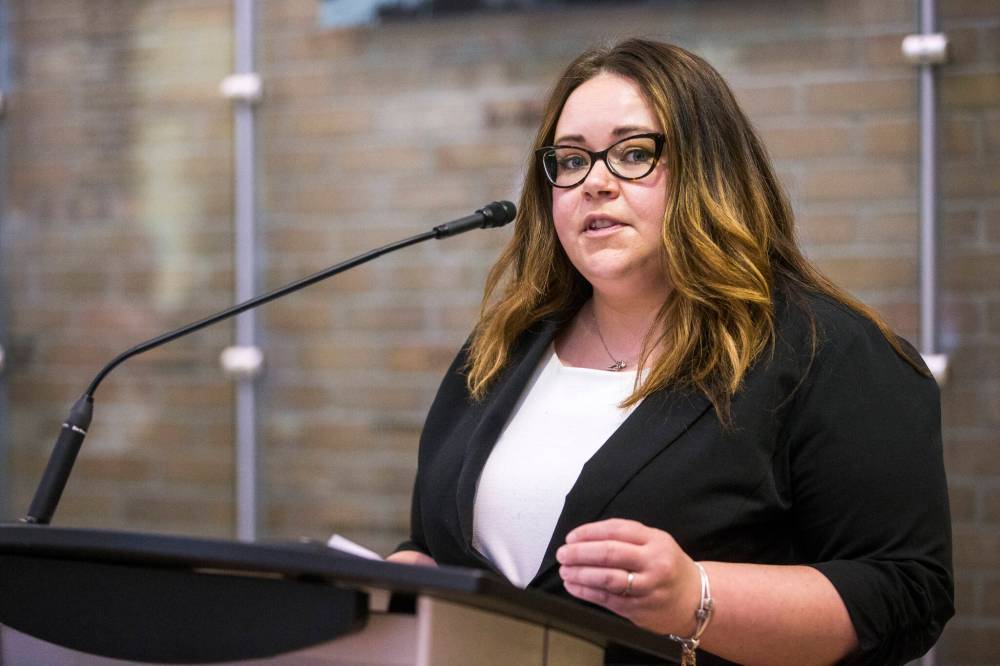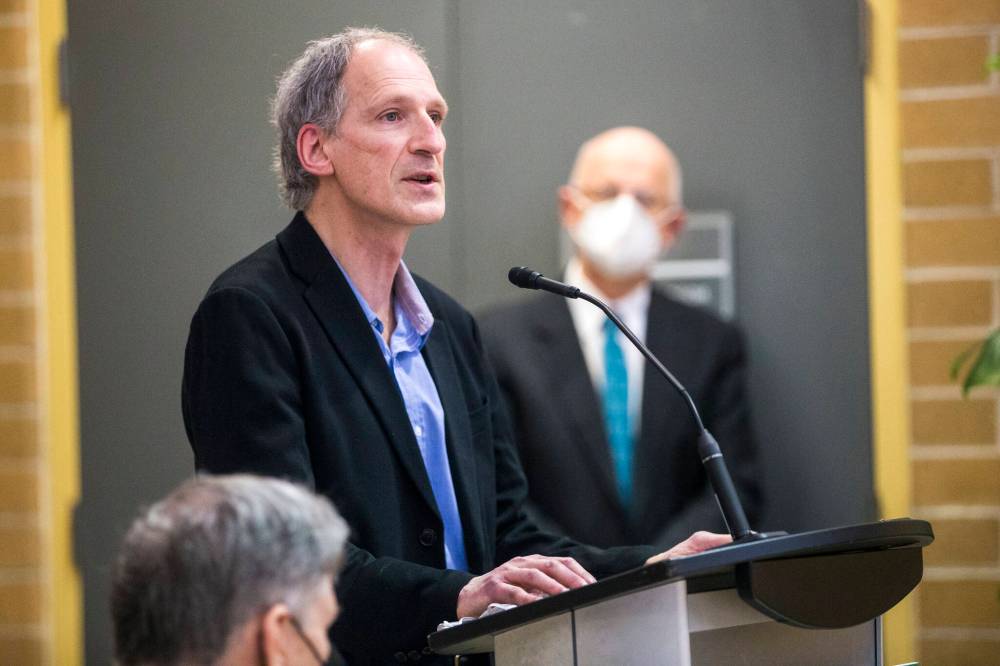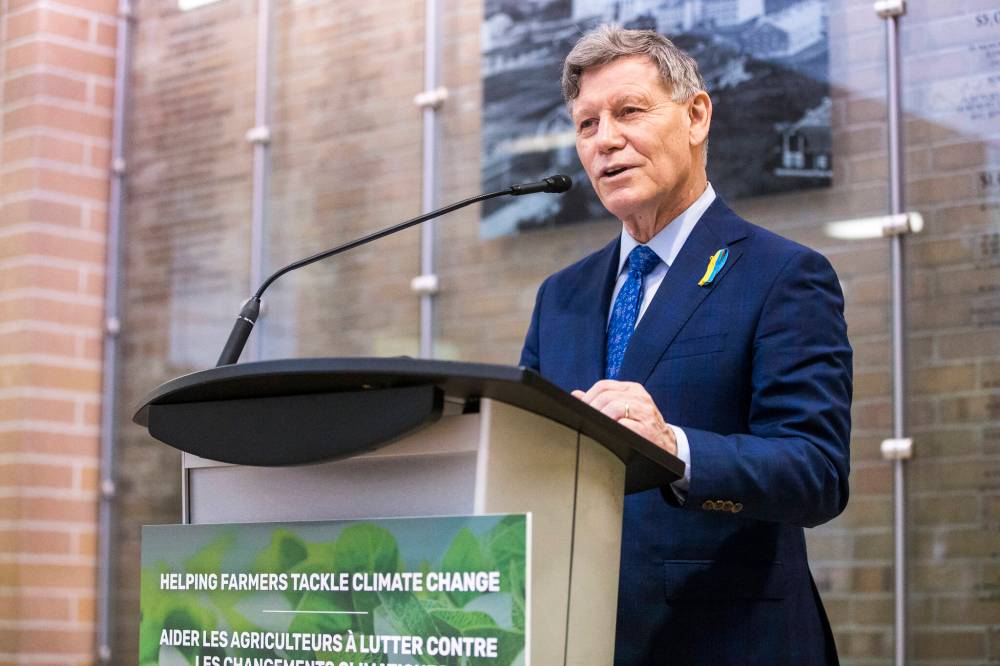Feds plant $66M for sustainable farming practices
Support also flows to projects that would help farmers adapt to climate change, reduce greenhouse emissions
Advertisement
Read this article for free:
or
Already have an account? Log in here »
To continue reading, please subscribe:
Monthly Digital Subscription
$1 per week for 24 weeks*
- Enjoy unlimited reading on winnipegfreepress.com
- Read the E-Edition, our digital replica newspaper
- Access News Break, our award-winning app
- Play interactive puzzles
*Billed as $4.00 plus GST every four weeks. After 24 weeks, price increases to the regular rate of $19.00 plus GST every four weeks. Offer available to new and qualified returning subscribers only. Cancel any time.
Monthly Digital Subscription
$4.75/week*
- Enjoy unlimited reading on winnipegfreepress.com
- Read the E-Edition, our digital replica newspaper
- Access News Break, our award-winning app
- Play interactive puzzles
*Billed as $19 plus GST every four weeks. Cancel any time.
To continue reading, please subscribe:
Add Free Press access to your Brandon Sun subscription for only an additional
$1 for the first 4 weeks*
*Your next subscription payment will increase by $1.00 and you will be charged $16.99 plus GST for four weeks. After four weeks, your payment will increase to $23.99 plus GST every four weeks.
Read unlimited articles for free today:
or
Already have an account? Log in here »
Hey there, time traveller!
This article was published 18/03/2022 (1318 days ago), so information in it may no longer be current.
Ottawa’s latest funding announcement for Manitoba farmers comes with one eye on the future — and its potential for more extreme weather events — and another on the past, with last year’s drought in the rear-view mirror.
“Climate change is real,” Terry Duguid, MP for Winnipeg South, said at a news conference Thursday. “(Last year’s) was the worst drought we had in many decades.
“The extreme nature of these events is related to climate change.”

He took the podium in the University of Manitoba’s Agriculture Building to announce more than $66 million in federal government funding for sustainable farming practices in the Prairies.
The Manitoba Association of Watersheds will receive up to $40 million.
“The work that’s being done on the land, it’s nothing short of inspiring,” said Lynda Nicol, the association’s executive director.
The association is hoping to increase rotational grazing, cover-cropping and nitrogen management with the funding. The money will give participating farmers tools and financial incentives, Nicol said.
“They are more than just farmers; they’re more than just business people,” Nicol said. “They’re on the leading edge of how to protect this land.”
Currently, the agriculture sector accounts for 10 per cent of Canada’s greenhouse gas emissions.
Sequestering carbon in soil and reducing greenhouse gases will benefit farmers in the long run, Nicol said. But, sometimes financial backing is needed for change to happen.
“Our hope is there will not only be adoption, but long-standing implementation of new practices (when you have) the financial incentives alongside the educational information,” Nicol said.
Details on how the money will be split and used is being worked out with Agriculture and Agri-Food Canada, and local water districts, Nicol said.
The Canola Council of Canada will use its grant of up to $22 million for some experimenting, while also financially supporting farmers participating in 4R nutrient stewardship, according to Curtis Rempel, the council’s vice-president of crop production and innovation.

The Rs stand for right rate, right place, right time, and right product. It’s a plan to reduce greenhouse gas emissions, including nitrous oxide.
Science has proven different farming practices effective in reducing nitrous oxide, including splitting nitrogen applications when feeding soil and using more efficient fertilizers, Rempel said.
The question is whether adopting more environmentally friendly actions will produce worthwhile crops and profits, he said.
“The big piece right now is… coming off a challenging drought year, the investment,” Rempel said. “Will the investment pay off in terms of actually giving us the yields and also (reducing) our nitrous oxide emissions?”
The council will keep an eye on three zones across the Prairies — fields with brown, dark brown and black soil. All have different nitrogen management requirements.
Larger crop yields can sequester more carbon.
“It takes nitrogen to produce higher yielding crops,” Rempel said. “If we want more carbon to be sequestered, we need more yield, which means potentially more nitrogen.”
The goal is to find efficiencies in using fertilizer, decreasing nitrogen use.
“In working with a key set of producers, we can sort of see how all of that unfolds, keep fine-tuning and tweaking, and go for that continuous improvement,” Rempel said.
The council will use its funding to work with roughly 10 million acres across the Prairies, Rempel said. More farmers will hop on the sustainability bandwagon if it’s proven they’ll still make money, he added.

Duguid announced another over $4.4 million for 10 Manitoba projects under the Agriculture Clean Technology Program. O Foods will power a new facility using biomass, and grain farmers are installing energy-efficient grain dryers through the program.
Ottawa will release its emissions reduction plan later this month, Duguid said. It will provide a road map to hitting net zero emissions by 2050, he said.
“Agriculture has a vital role to play to get us there,” Duguid said. “They have the greatest stake in the fight against climate change.”
Funding to the Manitoba Association of Watersheds and Canola Council of Canada comes through the On-Farm Climate Action Fund, which was first announced in the federal government’s 2021 budget.
Activities through the fund should reduce greenhouse gas emissions by up to two million tonnes by 2024, the federal government suggests.
gabrielle.piche@winnipegfreepress.com

Gabrielle Piché reports on business for the Free Press. She interned at the Free Press and worked for its sister outlet, Canstar Community News, before entering the business beat in 2021. Read more about Gabrielle.
Every piece of reporting Gabrielle produces is reviewed by an editing team before it is posted online or published in print — part of the Free Press‘s tradition, since 1872, of producing reliable independent journalism. Read more about Free Press’s history and mandate, and learn how our newsroom operates.
Our newsroom depends on a growing audience of readers to power our journalism. If you are not a paid reader, please consider becoming a subscriber.
Our newsroom depends on its audience of readers to power our journalism. Thank you for your support.

